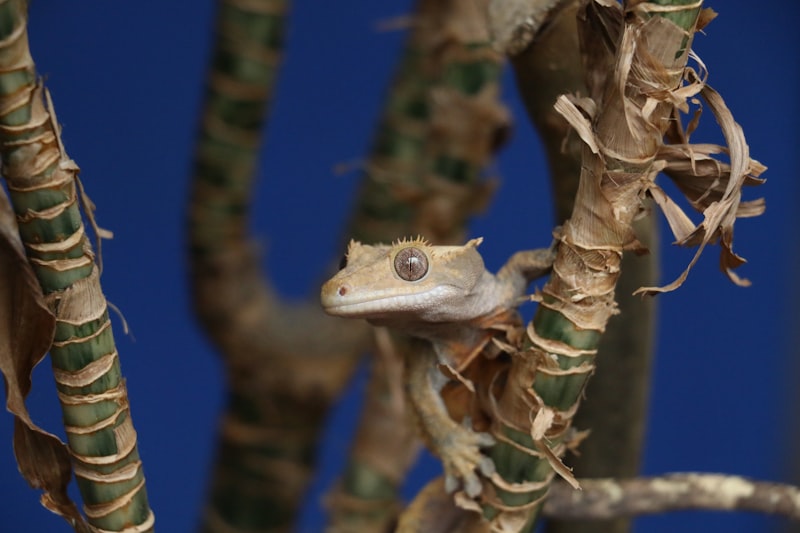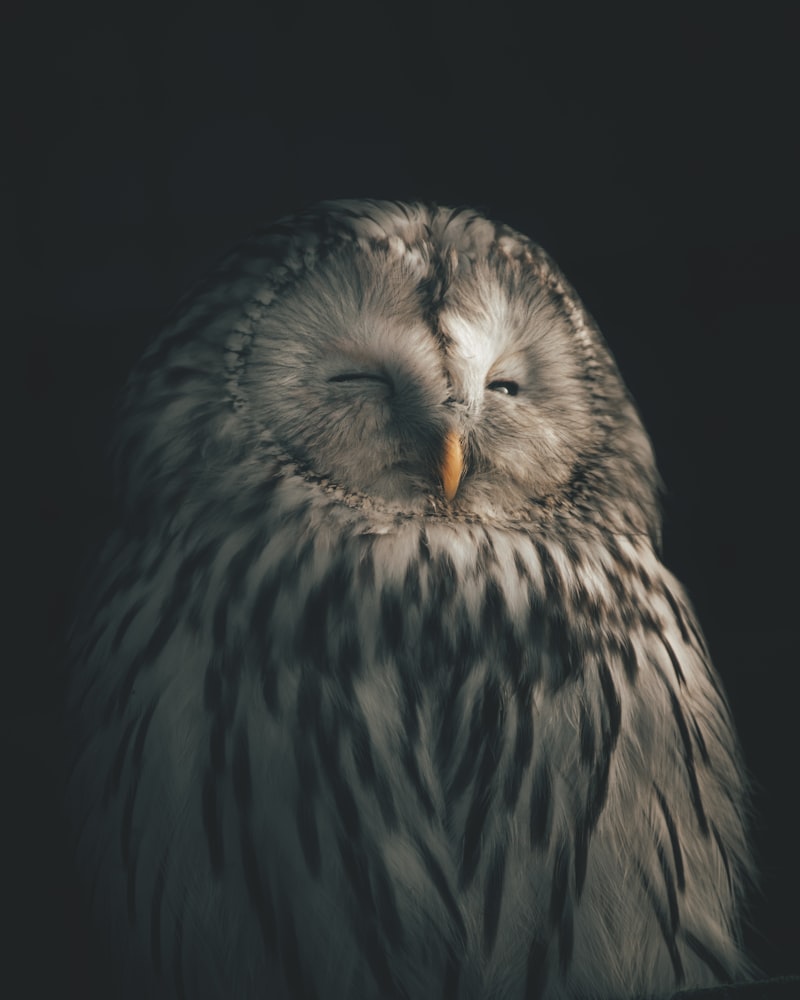One of the most iconic nocturnal animals is the owl. With its piercing eyes and silent flight, the owl embodies stealth and wisdom in the darkness. These birds are adept hunters, thanks to their keen vision and acute hearing, allowing them to detect prey with astonishing precision. Imagine being able to rotate your head almost 270 degrees—a feat that gives owls an unparalleled advantage in spotting their next meal under the cover of night.
Moving on to another enigmatic creature, the bat takes center stage in the nocturnal world. Often misunderstood, bats are essential for ecosystem balance as they play a crucial role in pollination and insect control. Using echolocation, bats navigate through the darkness with incredible dexterity, emitting high-pitched sounds that bounce off objects and guide them in flight. Their ability to consume thousands of insects in a single night makes them nature’s pest controllers, silently working while we sleep.
In the depths of the rainforest, the slow loris emerges from its daytime slumber to roam the night. With its large, round eyes and deliberate movements, this small primate is both adorable and elusive. The slow loris moves at a deliberate pace, carefully selecting its path in the dim moonlight, avoiding predators and searching for fruits and insects. Its gentle demeanor masks a venomous secret—a toxic bite that serves as a potent defense mechanism against threats, showcasing the paradoxical nature of these nocturnal creatures.
The world of nocturnal animals is a tapestry woven with adaptations and mysteries that challenge our understanding of life after dark. From the silent flight of owls to the precision echolocation of bats and the cautious stride of the slow loris, each creature has carved out its niche in the night, embodying resilience and adaptability in a world dominated by darkness. Exploring these creatures offers a glimpse into the wonders of nature’s ingenuity and the beauty of life hidden from daylight’s gaze.
Unveiling the Secrets of Nocturnal Hunters: Creatures of the Night
Ever wondered about the mysterious world of nocturnal hunters? These creatures of the night possess extraordinary adaptations that make them formidable predators under the cloak of darkness. From owls with their silent flight and razor-sharp talons to agile bats navigating the night sky with echolocation, each species has evolved unique strategies for survival.
Take the owl, for example. With feathers specially designed to minimize sound, they swoop down on unsuspecting prey with deadly precision. Their large eyes are adapted to low light conditions, allowing them to see clearly even in the darkest of nights. Owls are true masters of stealth and strategy, making them top predators in their nocturnal realm.
Bats, on the other hand, harness the power of echolocation. Emitting high-frequency sounds, these winged marvels bounce signals off objects, creating a detailed auditory map of their surroundings. This enables them to detect tiny insects mid-flight, demonstrating unparalleled accuracy in hunting.
Nocturnal hunters aren’t limited to birds and bats alone. Creatures like foxes, equipped with keen senses of smell and sharp claws, prowl the night in search of small mammals and birds. Their ability to blend into shadows and move silently allows them to surprise prey with swift, decisive strikes.
What makes these creatures so fascinating is not just their hunting prowess, but their role in balancing ecosystems. By controlling populations of rodents and insects, they help maintain the delicate equilibrium of nature. Imagine a world without these nocturnal guardians—where pests could overrun crops and forests, disrupting the intricate web of life.
The Hidden Lives of Nighttime Predators: Exploring Nocturnal Animals
Imagine the stealthy owl, a master of silent flight and acute hearing. This avian predator dominates the night skies with its keen eyesight, swooping down on unsuspecting prey with precision. Owls symbolize wisdom in folklore, their nocturnal prowess echoing ancient tales of wisdom and mystery.
Beneath the canopy, the elusive fox prowls with grace, its senses heightened in the moonlit landscape. Adapted for both stealth and speed, the fox embodies cunning and adaptability, traits essential for survival in the nocturnal world. Its nocturnal activities are shrouded in legend and lore, often associated with cleverness and agility.
Delving deeper into the nocturnal realm, the bat emerges as a nocturnal marvel. With echolocation as its guiding beacon, the bat navigates the night skies with unparalleled precision, hunting insects with astonishing efficiency. Often misunderstood yet crucial to ecosystem balance, bats exemplify the intricacies of nocturnal adaptation.
The kingdom of nocturnal predators extends to the slinking figure of the jaguar, a silent hunter of the South American rainforests. With powerful jaws and acute senses, the jaguar symbolizes strength and stealth, embodying the essence of nocturnal ferocity in its pursuit of prey.
Each nocturnal predator plays a vital role in its ecosystem, balancing delicate nocturnal food webs and contributing to biodiversity. Their adaptations and behaviors, shaped by millennia of evolution, continue to inspire awe and curiosity among researchers and nature enthusiasts alike.
The hidden lives of nighttime predators offer a glimpse into a realm where darkness reveals the true essence of survival and adaptation. As these creatures navigate the night, they underscore the marvels of evolution and the intricate tapestry of life after sunset.
Beyond the Darkness: Enigmatic Nocturnal Creatures Revealed
In the quiet of the night, when most of the world sleeps, a realm of mystery unfolds. Nocturnal creatures, shrouded in darkness, emerge to reveal a hidden tapestry of life. These creatures, adapted to thrive in the cloak of night, possess extraordinary senses and adaptations that intrigue and captivate.
Imagine the stealthy owl, its wings cutting through the air soundlessly as it hunts its prey with pinpoint accuracy. Known for its exceptional hearing and night vision, the owl embodies grace and precision in its nocturnal pursuits. Its haunting hoots echo through the stillness of the forest, a testament to its dominance in the night.

Contrastingly, the elusive bat takes to the skies, navigating effortlessly through the darkness using echolocation. Emitting high-frequency sounds, bats create a mental map of their surroundings, enabling them to detect even the tiniest prey in the vast expanse of the night sky. Their ability to defy gravity and maneuver with such agility is a marvel of evolutionary adaptation.
Venture beneath the ground, and the earthworm silently carries out its vital role in soil health during the night. As it burrows through the earth, the earthworm aerates the soil and breaks down organic matter, enriching it with nutrients essential for plant growth. Its unassuming presence belies its critical contribution to the ecosystem.
Meanwhile, the sleek and elusive jaguar prowls through the shadows of the rainforest. With its keen senses and muscular build, the jaguar is a formidable predator of the night, effortlessly blending into its surroundings as it stalks its prey with lethal precision. Its golden eyes gleam in the moonlight, a reminder of the raw power and beauty of nocturnal hunters.
From the enigmatic glow of fireflies to the ghostly call of the nightjar, nocturnal creatures evoke a sense of wonder and intrigue. Each species has evolved unique adaptations to thrive in the darkness, carving out niches that contribute to the rich tapestry of biodiversity on our planet.
Nighttime Wonders: Discovering the World of Nocturnal Animals
Imagine the enigmatic owl, its keen eyesight and exceptional hearing attuned to detect the slightest movement in the shadows. These birds of prey silently navigate through the dark, seeking out unsuspecting rodents or insects with remarkable precision. Their ability to rotate their heads almost 270 degrees adds to their mystique, embodying a symbol of wisdom and stealth.
Contrastingly, bats, often misunderstood, play a crucial role in our ecosystem as nocturnal hunters. With their sonar-like echolocation, they effortlessly maneuver through the night sky, snatching insects mid-flight. Bats’ wings, resembling delicate sails, enable them to perform intricate aerial acrobatics with grace and efficiency.

Delving deeper into the realm of nocturnal wonders, one encounters the elusive foxes and agile cats, expertly adapted to thrive during nighttime hours. Their keen senses of smell and acute hearing grant them a tactical advantage, whether stalking prey or evading predators under the moonlit canopy.
Beyond their physical prowess, these nocturnal creatures inspire curiosity and admiration. Their existence reminds us of the intricate balance of nature, where each species plays a vital role in maintaining biodiversity and ecological harmony. As the daytime world sleeps, these nocturnal marvels continue to roam, their presence a testament to the resilience and adaptability of life under the stars.
The world of nocturnal animals offers a glimpse into a realm of mystery and marvel. From the stealthy owls to the acrobatic bats and elusive foxes, each species contributes to the tapestry of our natural world. Their adaptations, behaviors, and survival strategies enrich our understanding of the intricate ecosystems that thrive after sunset, perpetuating a cycle of life that spans from dusk till dawn.
Frequently Asked Questions
What are some unique characteristics of nocturnal animal behavior?
Discover unique characteristics of nocturnal animal behavior, exploring their adaptations to low-light conditions, heightened senses like acute hearing and smell, and specialized eyesight. Learn how these animals hunt, communicate, and navigate during the night to survive and thrive in their habitats.
Which nocturnal animals are commonly found in different regions?
Discover which nocturnal animals are frequently encountered across various regions worldwide with this concise FAQ. Learn about the diverse creatures that are active during the night, ranging from owls in North America to kangaroo rats in deserts, and explore their unique adaptations for nocturnal life.
How do nocturnal animals adapt to their dark environments?
Learn how nocturnal animals adapt to dark environments, including enhanced night vision, specialized senses like hearing and smell, and unique behaviors such as stealthy movements to avoid predators and hunt effectively.
How do nocturnal animals hunt and communicate in the dark?
Learn how nocturnal animals utilize specialized senses like enhanced night vision and acute hearing to hunt and communicate effectively in low-light conditions.
What are nocturnal animals and why are they active at night?
Nocturnal animals are creatures that are primarily active during the night. They have adapted to darkness by developing enhanced senses such as night vision and heightened hearing, allowing them to hunt, navigate, and avoid predators more effectively in low-light conditions. This behavior helps them avoid daytime heat and predation, and some species have evolved to find food sources that are more available at night.

